MARKETING
Boost Customer Experience with Marketing Orchestration
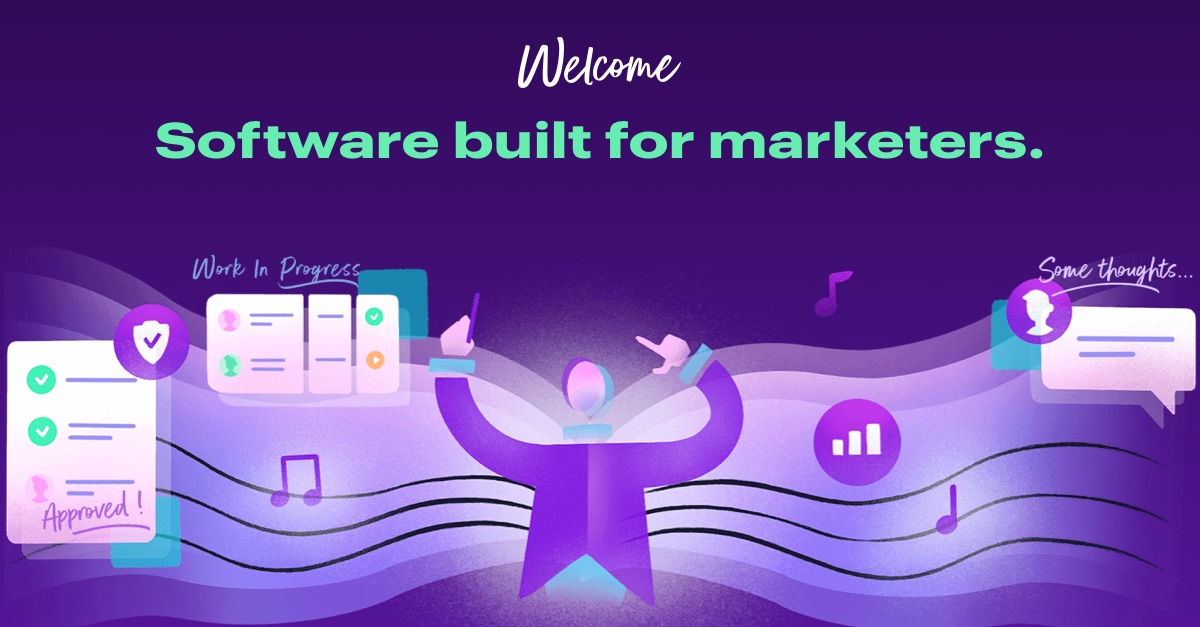
Marketing orchestration is the process of bringing harmony between the many fronts of your marketing strategy.
Every once in a while, you should consider stepping back and looking at the magnitude of the engine you’ve created. For perspective, you can look at:
- Dozens of tools that make up your martech stack
- The army of ideators, content creators, and editors
- Number of cross-functional teams all working together
- Heaps upon heaps of customer and target audience data sets
It’s a miracle that modern marketing teams run smoothly. However, there is a method to the madness. It’s called marketing orchestration.
Then pause and picture a set of new graduates right off Fort Bragg.
Notice the beauty of their equally paced strides and the resultant black boots in lockstep.
Appreciate their flawless waves of motion and synchrony of thought.
All this happening with harmonious symphonies of the band in the background.
Isn’t it beautiful?
This is the promise of marketing orchestration, and as this blog will show, it does wonders for your customer experience.
Just How Much Have Your Customers Changed Since 2010
What could possibly change in ten years? In the case of this past decade, well, everything.
You’d be surprised.
The tastes, preferences, and tolerance of your customers look nothing like they did a decade ago.
What your consumers considered a positive experience back then is probably mediocre right now. And you can see these changes in how:
1. Your Current Customers Expect Personalization
Your customers nowadays don’t value personalization. If anything, they’re past that. Personalization is something they expect.
71% of customers feel frustrated if a shopping experience isn’t personalized.
However, the rise of silos, different marketing tools, and marketing channels make collecting data and personalization a nightmare.
2. Your Target Audience is Now On Different Platforms
In 2010, you’d be lucky to find half of your customers on Twitter. Nowadays, your customers are on Twitter and a dozen other platforms.
What makes it even harder is that your customers expect consistency as they move across these platforms.
You can’t say one thing on Facebook and another on Instagram. It’s hard to believe, but audiences notice even the slightest variations.
3. Your Customer Expect Flawless Cross Channel Experiences
Unlike 2010, your customers now live in the most convenient times in history.
Look around and notice the 5G internet speeds, two-day Amazon deliveries, and one-click payments.
While you were reading that, a prospect of yours somewhere ordered pizza. It’ll be delivered a few minutes after you’re done with this piece.
Only one problem. Your target audience expects the same from your marketing strategy at any point in your customer journey.
That’s why browsers abandon pages that take more than 3 seconds to load.
With that in mind, moving from your IG page to your website should be flawless, taking as little time as possible. Subsequently, you need an efficient content creation process that delivers relevant content whenever your target audience needs it.
The Consequences, Silos Galore and What This Means
With these changes in customer expectations, marketers were forced to adapt to an ever-increasing number of complexities.
As a result, when you walk around your marketing organization, you’re likely to see:
1. A Bloated Stack of Martech Tools
It takes 78% of marketers more than 5 tools to execute, plan and run a marketing campaign. (Welcome & Sirkin Internal Study Jan 2021).
Modern marketers did what they did best to meet these customer demands, automating using the available technologies.
This has created so many incompatible tools held together by weak integrations in marketing teams it’s sad. As a result, your customers:
- Get inconsistent outreach from different platforms
- Repetitive outreach, e.g., sending a client two emails
- Slower services when moving between endpoints
2. Team and Departmental Silos
For every critical aspect of customer experience, you probably have a team dedicated to just that. Often, you will have a:
- Content creation team
- Search Engine Optimization Team
- Customer acquisition team
Oblivious to many, the more teams and team members you have, the harder it is to achieve synchrony.
Think about it, would you rather have a choir of 10 members or one of a hundred members. This eventually leads to:
- Unproductive and inefficient teams
- Recurrence and repetition of tasks
- A varying tone during customer outreach
3. Difficulty Measuring Progress
With the rise of multiple teams, channels, and marketing tools, everything blurs, and measuring progress becomes a nightmare.
84% of marketers say that demonstrating meaningful results is critical. (Welcome & Sirkin internal study, Jan 2021)
You’ve probably tried metrics and key performance indicators. However, even these strategies are no match for the disorganization of a fragmented marketing platform.
As a result, you may end up with:
- Aspects of unpleasant customer experiences that are difficult to root out
- Keeping expensive and ineffective CX strategies still running
- Inability to respond effectively to customer feedback
What Is Marketing Orchestration
Forrester defines marketing orchestration as a powerful tool in ABM and marketing. This tool focuses not on standalone campaigns but on optimizing a set of related cross-channel interactions that together make up an individualized customer experience.
If jargon isn’t your cup of tea, the term comes from the literal orchestra. Picture several individuals playing different instruments that blend to create a beautiful symphony and a wonderful experience.
That’s the closest you’ll ever get to a perfect explanation of the relationship between marketing orchestration and customer experience.
This strategy aims to enable your team to deliver content, through the right channels, at the right time, and to the right person.
The Importance of Customer Experience, in Numbers
On the other side of marketing, customer experience is rising in essence like never before. Marketing was once about what you told people.
It then changed to what you showed people.
Nowadays, marketing is about how you make your clients feel, and that is customer experience at its finest.
A few CX statistics to put its importance in context include:
- There is an 80% increase in revenue for businesses that decide to focus on customer experience
- 73% of customers point to customer experience as an important factor in their purchasing decision.
- 86% of customers are willing to pay more if it means getting a better customer experience
- 89% of customers started doing business with a consumer after a poor customer experience.
Marketing Orchestration and Customer Experience: Where their Destinies Cross Paths
You’re probably wondering what your CX strategy has to do with your marketing orchestration strategy: short answer, everything.
Marketing orchestration and a positive customer experience are intertwined. Right now, it’s impossible to have one without the other.
The long answer involves the power of marketing orchestration to:
- Coordinate the timing, message, and segmentation of your omnichannel marketing
- Scalability and introduction of new channels into your CX strategy
- Eliminating bottlenecks in the curation of personalized content
- Leveraging AI for predictive decision-making.
Marketing Orchestration in Action: What To Expect Post Adopting Marketing Orchestration
Marketing orchestration will make your customer experience strategies effective, efficient, and measurable. It will help break down your marketing from this gigantic mountain of complexity to a straightforward process even an intern can understand.
Some of the benefits of marketing orchestration that will eventually result in a better customer experience are:
1. Leveraging Data to Demonstrate Impact of Different Channels
Marketing orchestration will bring your trial and error days to an end and welcome you to an era of informed decision-making.
By ensuring symphony over different channels, you can now track the performance of different channels and even perform AB testing as far as CX is concerned.
Do your inbound SEO strategies bring in more leads than your PPC ads?
With marketing orchestration, you’ll have answers. This will enable you to make informed decisions on funding and improvement.
2. An Improved Customer Messaging Fit
Determining the relevance of a message to the circumstance of your target audience is one of the leading causes of sleepless nights in marketing.
However, marketing orchestration may have cracked the code.
Marketing orchestration enables you to collect and execute data on the preferences of your customers. It would help you answer:
- What medium do my customers prefer?
- What medium do my customers prefer at certain times?
- What message will appeal to my customers at a future date?
Through predictive analysis, your system is now better poised to determine the subject line, channel, time, and even tone of your personalized message leading to a better CX.
3. Segmentation of Your Multiple Marketing Channels
Marketing will help map out your entire customer experience from the perspective of marketing channels.
With a step-by-step understanding of how your customers interact with your channels, segmenting connected channels becomes easier.
You can apply this knowledge in sending:
- Long-form content such as newsletters through email
- Brief notifications through social media and direct messaging
- Discounts and notifications in-app or through websites
This makes the repurposing of content and automation efficient since channels with a similar customer effect are grouped.
4. Reducing Low-Level Stress and Anxiety Customers May Have In Their Journey
Your customers are constantly faced with a certain level of anxiety at each level of their customer journey. Some of the questions that fuel this anxiety include:
- Is this product legitimate
- Will I lose my money purchasing this product
- Can I take this seller or website at their word
Marketing orchestration allows you to lay these uncertainties to rest with the appropriate marketing channel.
Take buying something on Amazon, for example. Their orchestration may send you a text message to let you know that your order is confirmed.
They’ll then send you an email and an in-app message to tell you that you can track your product.
Don’t Know Where To Start: How About You Bring Everything Under A Single Dashboard.
Running different marketing tools can be a hassle. However, it doesn’t have to be this way.
Welcome offers a solution.
Why not replace the dozens of tools with a single unified platform, and improve your customer experience while at it.
Welcome will bring all cross-functional aspects of your marketing strategy under a single dashboard.
From this dashboard, you can track progress, automate workflows, and communicate with your teams. Ready to give it a try? Get started with a free Welcome account today!
Source link
MARKETING
YouTube Ad Specs, Sizes, and Examples [2024 Update]
![YouTube Ad Specs, Sizes, and Examples [2024 Update] YouTube Ad Specs, Sizes, and Examples](https://articles.entireweb.com/wp-content/uploads/2024/06/YouTube-Ad-Specs-Sizes-and-Examples.jpg)
Introduction
With billions of users each month, YouTube is the world’s second largest search engine and top website for video content. This makes it a great place for advertising. To succeed, advertisers need to follow the correct YouTube ad specifications. These rules help your ad reach more viewers, increasing the chance of gaining new customers and boosting brand awareness.
Types of YouTube Ads
Video Ads
- Description: These play before, during, or after a YouTube video on computers or mobile devices.
- Types:
- In-stream ads: Can be skippable or non-skippable.
- Bumper ads: Non-skippable, short ads that play before, during, or after a video.
Display Ads
- Description: These appear in different spots on YouTube and usually use text or static images.
- Note: YouTube does not support display image ads directly on its app, but these can be targeted to YouTube.com through Google Display Network (GDN).
Companion Banners
- Description: Appears to the right of the YouTube player on desktop.
- Requirement: Must be purchased alongside In-stream ads, Bumper ads, or In-feed ads.
In-feed Ads
- Description: Resemble videos with images, headlines, and text. They link to a public or unlisted YouTube video.
Outstream Ads
- Description: Mobile-only video ads that play outside of YouTube, on websites and apps within the Google video partner network.
Masthead Ads
- Description: Premium, high-visibility banner ads displayed at the top of the YouTube homepage for both desktop and mobile users.
YouTube Ad Specs by Type
Skippable In-stream Video Ads
- Placement: Before, during, or after a YouTube video.
- Resolution:
- Horizontal: 1920 x 1080px
- Vertical: 1080 x 1920px
- Square: 1080 x 1080px
- Aspect Ratio:
- Horizontal: 16:9
- Vertical: 9:16
- Square: 1:1
- Length:
- Awareness: 15-20 seconds
- Consideration: 2-3 minutes
- Action: 15-20 seconds
Non-skippable In-stream Video Ads
- Description: Must be watched completely before the main video.
- Length: 15 seconds (or 20 seconds in certain markets).
- Resolution:
- Horizontal: 1920 x 1080px
- Vertical: 1080 x 1920px
- Square: 1080 x 1080px
- Aspect Ratio:
- Horizontal: 16:9
- Vertical: 9:16
- Square: 1:1
Bumper Ads
- Length: Maximum 6 seconds.
- File Format: MP4, Quicktime, AVI, ASF, Windows Media, or MPEG.
- Resolution:
- Horizontal: 640 x 360px
- Vertical: 480 x 360px
In-feed Ads
- Description: Show alongside YouTube content, like search results or the Home feed.
- Resolution:
- Horizontal: 1920 x 1080px
- Vertical: 1080 x 1920px
- Square: 1080 x 1080px
- Aspect Ratio:
- Horizontal: 16:9
- Square: 1:1
- Length:
- Awareness: 15-20 seconds
- Consideration: 2-3 minutes
- Headline/Description:
- Headline: Up to 2 lines, 40 characters per line
- Description: Up to 2 lines, 35 characters per line
Display Ads
- Description: Static images or animated media that appear on YouTube next to video suggestions, in search results, or on the homepage.
- Image Size: 300×60 pixels.
- File Type: GIF, JPG, PNG.
- File Size: Max 150KB.
- Max Animation Length: 30 seconds.
Outstream Ads
- Description: Mobile-only video ads that appear on websites and apps within the Google video partner network, not on YouTube itself.
- Logo Specs:
- Square: 1:1 (200 x 200px).
- File Type: JPG, GIF, PNG.
- Max Size: 200KB.
Masthead Ads
- Description: High-visibility ads at the top of the YouTube homepage.
- Resolution: 1920 x 1080 or higher.
- File Type: JPG or PNG (without transparency).
Conclusion
YouTube offers a variety of ad formats to reach audiences effectively in 2024. Whether you want to build brand awareness, drive conversions, or target specific demographics, YouTube provides a dynamic platform for your advertising needs. Always follow Google’s advertising policies and the technical ad specs to ensure your ads perform their best. Ready to start using YouTube ads? Contact us today to get started!
MARKETING
Why We Are Always ‘Clicking to Buy’, According to Psychologists

Amazon pillows.
MARKETING
A deeper dive into data, personalization and Copilots
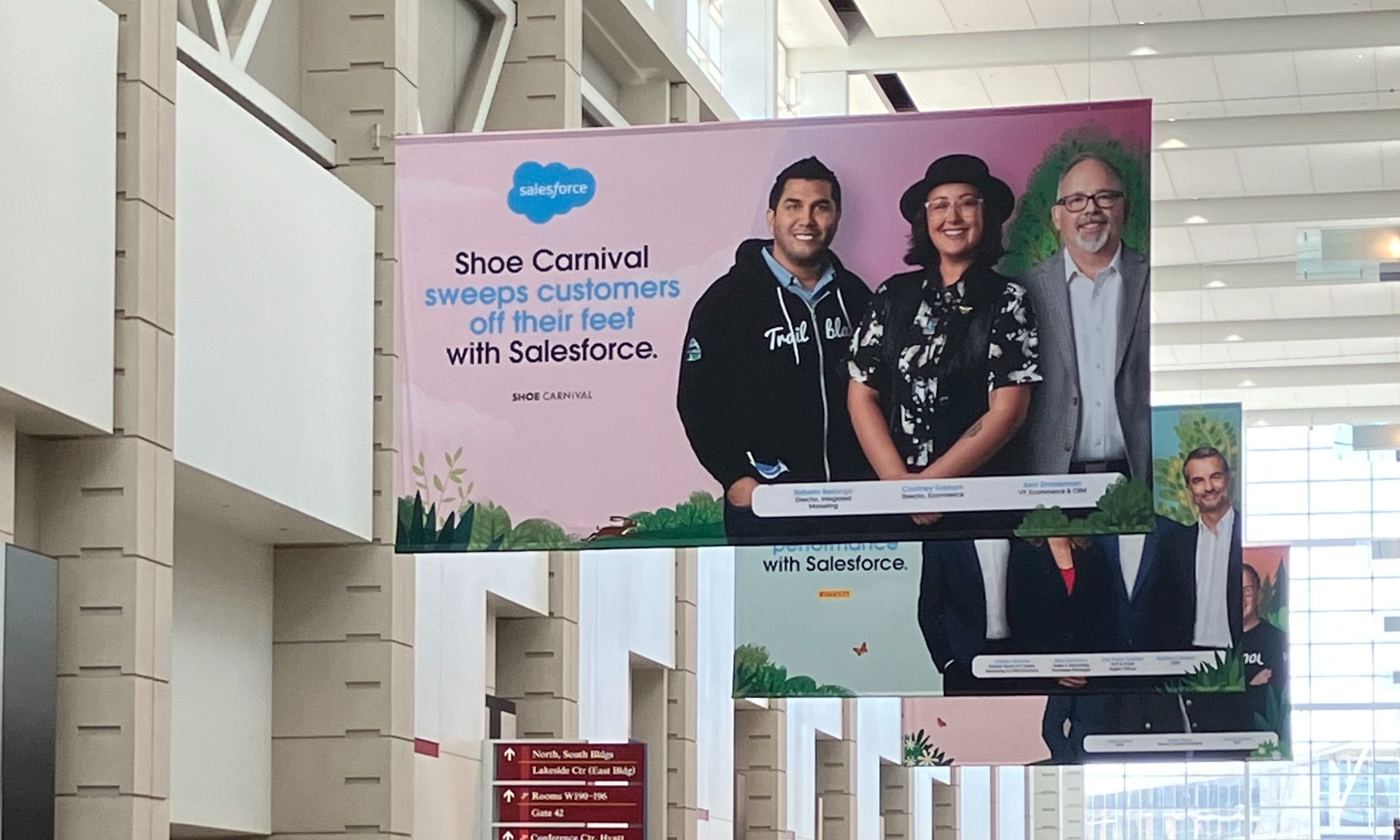
Salesforce launched a collection of new, generative AI-related products at Connections in Chicago this week. They included new Einstein Copilots for marketers and merchants and Einstein Personalization.
To better understand, not only the potential impact of the new products, but the evolving Salesforce architecture, we sat down with Bobby Jania, CMO, Marketing Cloud.
Dig deeper: Salesforce piles on the Einstein Copilots
Salesforce’s evolving architecture
It’s hard to deny that Salesforce likes coming up with new names for platforms and products (what happened to Customer 360?) and this can sometimes make the observer wonder if something is brand new, or old but with a brand new name. In particular, what exactly is Einstein 1 and how is it related to Salesforce Data Cloud?
“Data Cloud is built on the Einstein 1 platform,” Jania explained. “The Einstein 1 platform is our entire Salesforce platform and that includes products like Sales Cloud, Service Cloud — that it includes the original idea of Salesforce not just being in the cloud, but being multi-tenancy.”
Data Cloud — not an acquisition, of course — was built natively on that platform. It was the first product built on Hyperforce, Salesforce’s new cloud infrastructure architecture. “Since Data Cloud was on what we now call the Einstein 1 platform from Day One, it has always natively connected to, and been able to read anything in Sales Cloud, Service Cloud [and so on]. On top of that, we can now bring in, not only structured but unstructured data.”
That’s a significant progression from the position, several years ago, when Salesforce had stitched together a platform around various acquisitions (ExactTarget, for example) that didn’t necessarily talk to each other.
“At times, what we would do is have a kind of behind-the-scenes flow where data from one product could be moved into another product,” said Jania, “but in many of those cases the data would then be in both, whereas now the data is in Data Cloud. Tableau will run natively off Data Cloud; Commerce Cloud, Service Cloud, Marketing Cloud — they’re all going to the same operational customer profile.” They’re not copying the data from Data Cloud, Jania confirmed.
Another thing to know is tit’s possible for Salesforce customers to import their own datasets into Data Cloud. “We wanted to create a federated data model,” said Jania. “If you’re using Snowflake, for example, we more or less virtually sit on your data lake. The value we add is that we will look at all your data and help you form these operational customer profiles.”
Let’s learn more about Einstein Copilot
“Copilot means that I have an assistant with me in the tool where I need to be working that contextually knows what I am trying to do and helps me at every step of the process,” Jania said.
For marketers, this might begin with a campaign brief developed with Copilot’s assistance, the identification of an audience based on the brief, and then the development of email or other content. “What’s really cool is the idea of Einstein Studio where our customers will create actions [for Copilot] that we hadn’t even thought about.”
Here’s a key insight (back to nomenclature). We reported on Copilot for markets, Copilot for merchants, Copilot for shoppers. It turns out, however, that there is just one Copilot, Einstein Copilot, and these are use cases. “There’s just one Copilot, we just add these for a little clarity; we’re going to talk about marketing use cases, about shoppers’ use cases. These are actions for the marketing use cases we built out of the box; you can build your own.”
It’s surely going to take a little time for marketers to learn to work easily with Copilot. “There’s always time for adoption,” Jania agreed. “What is directly connected with this is, this is my ninth Connections and this one has the most hands-on training that I’ve seen since 2014 — and a lot of that is getting people using Data Cloud, using these tools rather than just being given a demo.”
What’s new about Einstein Personalization
Salesforce Einstein has been around since 2016 and many of the use cases seem to have involved personalization in various forms. What’s new?
“Einstein Personalization is a real-time decision engine and it’s going to choose next-best-action, next-best-offer. What is new is that it’s a service now that runs natively on top of Data Cloud.” A lot of real-time decision engines need their own set of data that might actually be a subset of data. “Einstein Personalization is going to look holistically at a customer and recommend a next-best-action that could be natively surfaced in Service Cloud, Sales Cloud or Marketing Cloud.”
Finally, trust
One feature of the presentations at Connections was the reassurance that, although public LLMs like ChatGPT could be selected for application to customer data, none of that data would be retained by the LLMs. Is this just a matter of written agreements? No, not just that, said Jania.
“In the Einstein Trust Layer, all of the data, when it connects to an LLM, runs through our gateway. If there was a prompt that had personally identifiable information — a credit card number, an email address — at a mimum, all that is stripped out. The LLMs do not store the output; we store the output for auditing back in Salesforce. Any output that comes back through our gateway is logged in our system; it runs through a toxicity model; and only at the end do we put PII data back into the answer. There are real pieces beyond a handshake that this data is safe.”
-

 WORDPRESS3 days ago
WORDPRESS3 days agoWordPress biz Automattic details WP Engine deal demands • The Register
-
SEARCHENGINES5 days ago
Daily Search Forum Recap: September 30, 2024
-
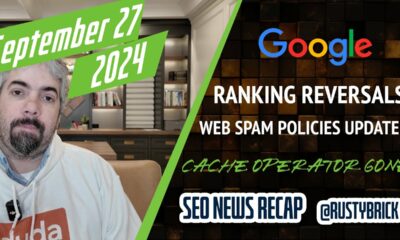
 SEARCHENGINES6 days ago
SEARCHENGINES6 days agoGoogle Volatility With Gains & Losses, Updated Web Spam Policies, Cache Gone & More Search News
-

 SEO7 days ago
SEO7 days ago6 Things You Can Do to Compete With Big Sites
-
SEARCHENGINES4 days ago
Daily Search Forum Recap: October 1, 2024
-

 SEO6 days ago
SEO6 days agoAn In-Depth Guide For Businesses
-

 AFFILIATE MARKETING6 days ago
AFFILIATE MARKETING6 days agoNvidia CEO Jensen Huang Praises Nuclear Energy to Power AI
-
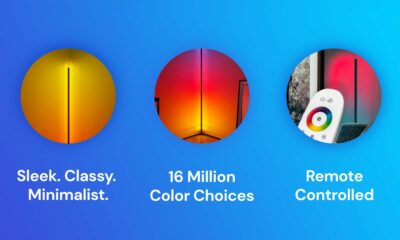
 AFFILIATE MARKETING6 days ago
AFFILIATE MARKETING6 days agoThis Minimalist Lamp Lets You Pick From 16 Million+ Lighting Colors for Maximum Productivity


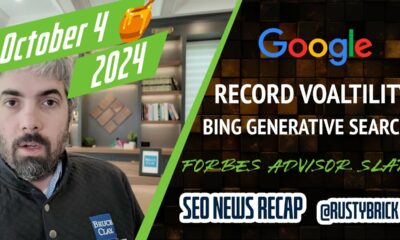





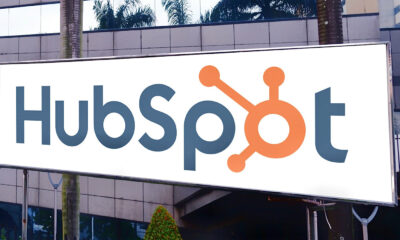

![Holistic Marketing Strategies That Drive Revenue [SaaS Case Study] Holistic Marketing Strategies That Drive Revenue [SaaS Case Study]](https://articles.entireweb.com/wp-content/uploads/2024/09/Holistic-Marketing-Strategies-That-Drive-Revenue-SaaS-Case-Study-400x240.png)
![Holistic Marketing Strategies That Drive Revenue [SaaS Case Study] Holistic Marketing Strategies That Drive Revenue [SaaS Case Study]](https://articles.entireweb.com/wp-content/uploads/2024/09/Holistic-Marketing-Strategies-That-Drive-Revenue-SaaS-Case-Study-80x80.png)
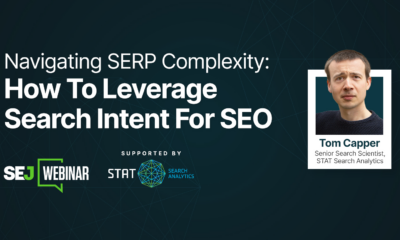


You must be logged in to post a comment Login